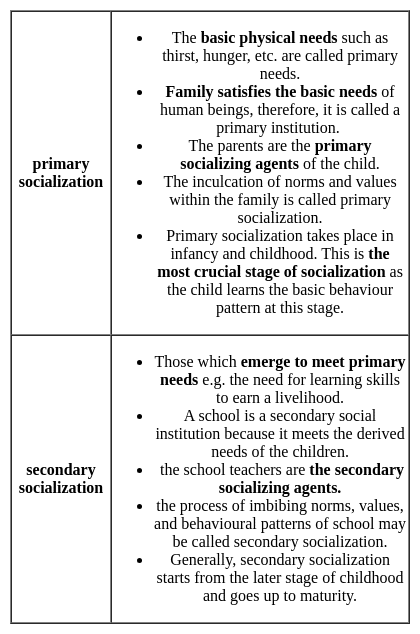CTET & State TET Exam > CTET & State TET Tests > EVS Content (Family & Society) - CTET & State TET MCQ
EVS Content (Family & Society) - CTET & State TET MCQ
Test Description
10 Questions MCQ Test - EVS Content (Family & Society)
EVS Content (Family & Society) for CTET & State TET 2025 is part of CTET & State TET preparation. The EVS Content (Family & Society) questions and answers have been prepared
according to the CTET & State TET exam syllabus.The EVS Content (Family & Society) MCQs are made for CTET & State TET 2025 Exam.
Find important definitions, questions, notes, meanings, examples, exercises, MCQs and online tests for EVS Content (Family & Society) below.
Solutions of EVS Content (Family & Society) questions in English are available as part of our course for CTET & State TET & EVS Content (Family & Society) solutions in
Hindi for CTET & State TET course.
Download more important topics, notes, lectures and mock test series for CTET & State TET Exam by signing up for free. Attempt EVS Content (Family & Society) | 10 questions in 10 minutes | Mock test for CTET & State TET preparation | Free important questions MCQ to study for CTET & State TET Exam | Download free PDF with solutions
EVS Content (Family & Society) - Question 1
Family plays an important role in socialization of the young generation. In this regard, the family is an agency of:
Detailed Solution for EVS Content (Family & Society) - Question 1
EVS Content (Family & Society) - Question 2
Who has control over all the members of the family in the joint family system?
Detailed Solution for EVS Content (Family & Society) - Question 2
EVS Content (Family & Society) - Question 3
In the Chandu family, his father uses tobacco every day and when Chandu says papa please don't eat it is dangerous, still he is not quitting because
Detailed Solution for EVS Content (Family & Society) - Question 3
Detailed Solution for EVS Content (Family & Society) - Question 4
EVS Content (Family & Society) - Question 5
Rita lives with her working mother, father, younger brother, grandparents, father's brother, and his family. This kind of family format is:
Detailed Solution for EVS Content (Family & Society) - Question 5
EVS Content (Family & Society) - Question 6
Sitamma lives in her ancestral house in a small city Guntoor. Her dada, dadi, younger chacha and bua live on the ground floor. In one portion of the first floor, Sitamma lives with her father, mother and younger sister Gitamma. What kind of family is this?
Detailed Solution for EVS Content (Family & Society) - Question 6
EVS Content (Family & Society) - Question 7
Which among the following will not be considered as a family member?
Detailed Solution for EVS Content (Family & Society) - Question 7
EVS Content (Family & Society) - Question 8
Which of the following is not a characteristic of a family?
Detailed Solution for EVS Content (Family & Society) - Question 8
EVS Content (Family & Society) - Question 9
Individualistic family pattern is fastly increasing because of the following
Detailed Solution for EVS Content (Family & Society) - Question 9
Detailed Solution for EVS Content (Family & Society) - Question 10
Information about EVS Content (Family & Society) Page
In this test you can find the Exam questions for EVS Content (Family & Society) solved & explained in the simplest way possible.
Besides giving Questions and answers for EVS Content (Family & Society), EduRev gives you an ample number of Online tests for practice
Download as PDF















